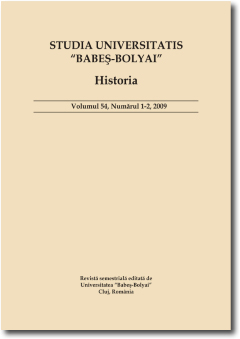“DONATIO PRO MEMORIA”: LAY AND FEMALE DONORS AND THEIR REMEMBRANCE IN LATE MEDIEVAL TRANSYLVANIA. RESEARCH ON VISUAL AND DOCUMENTARY EVIDENCE
“DONATIO PRO MEMORIA”: LAY AND FEMALE DONORS AND THEIR REMEMBRANCE IN LATE MEDIEVAL TRANSYLVANIA. RESEARCH ON VISUAL AND DOCUMENTARY EVIDENCE
Author(s): Ciprian FireaSubject(s): History
Published by: Studia Universitatis Babes-Bolyai
Keywords: women; testaments; offerings; memorial art; liturgy; patronage; Transylvania.
Summary/Abstract: In the last few decades research has focused on the theme of memoria, a manifold phenomenon which pervaded the everyday life of medieval men and women. In the conception of that time, the remembrance of the deceased was intimately related to his/her personal salvation. Therefore, medieval men and women alike invested a significant share in memorial programmes intended to ensure their presence even after death in the society of the living. The latter, through prayers and suffrages, were supposed to help the dead in their purgatorial journey and in the quest for redemption. People already made provision during their lifetime for the hereafter, and strove for viaticum: an accumulation of good deeds that could likewise ensure good memory, and eventually the reward of eternal life. Gifts made to religious institutions and individuals were considered instrumental for triggering remembrance. The expected counter-gifts consisted in masses and liturgical services, prayers pro anima and suffrages for a determined period of time or for eternity. Memoria, closely related to personal identity, was largely incited by visual stimuli or props: inscriptions bearing the name of the deceased, donor portraits, coats of arms, tombstones, epitaphs etc. This study aims to analyse some late medieval Transylvanian evidence from the point of view of memoria. The main purpose is to identify and emphasise specific strategies (related to gender, or distinct social classes) adopted by Transylvanian laymen and (particularly) women in order to ensure their remembrance. The study relies upon different categories of sources, both written (wills, dona pia recorded in documents, registers of benefactors etc.) and visual (donor portraits, heraldry, monumental or public inscriptions, funeral slabs etc.).
Journal: Studia Universitatis Babes-Bolyai - Historia
- Issue Year: 58/2013
- Issue No: Special
- Page Range: 107-135
- Page Count: 29
- Language: English

